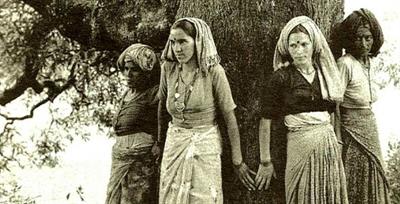
PUMPA - SMART LEARNING
எங்கள் ஆசிரியர்களுடன் 1-ஆன்-1 ஆலோசனை நேரத்தைப் பெறுங்கள். டாப்பர் ஆவதற்கு நாங்கள் பயிற்சி அளிப்போம்
Book Free DemoIn the previous theory, afforestation as a forest conservation measure was dealt with. Forest conservation can also be accomplished in the following ways:
2. Social forestry programme:
Social forestry refers to the management and protection of forests, as well as afforestation on barren lands to aid in environmental, social, and rural development. The term was coined in \(1976\) by the National Commission on Agriculture, Government of India. The primary goal of social forestry is to encourage the common man to plant trees to meet the rising demand for timber, fuelwood, fodder etc., thereby relieving the strain on conventional forest areas.
It should be implemented on a large scale, with active public participation and the use of common land to produce firewood, fodder, and timber for the rural community's benefit. This helps relieve pressure on existing forests while also ensuring the tribals' long-term survival.
Objectives of social forestry:
- To improve the environment for protecting agriculture from adverse climatic factors.
- To increase the availability of domestic fuelwood, small timber for rural housing, fodder for livestock, and minor forest produce for local industry.
- To increase the landscape's natural beauty and establish recreational forests to benefit both rural and urban populations.
- To provide jobs for unskilled workers.
- To improve people's living standards and quality of life in rural and urban areas.
3. Forest conservation through laws:
Through the National Forest Policy (\(1952\) and \(1988\)) and the Forest Conservation Act (\(1980\)), stringent laws, regulations and policies were enacted to conserve and protect forests.

Conserve the tree
Important!
In \(1973\), the Chipko movement was a non-violent agitation aiming to protect and conserve trees. "Chipko" in Hindi means to "to stick" or "to hug" or "to cling to". The term "Chipko" derives from the word "embrace", as the villagers (locals) hugged and encircled the trees to prevent them from being cut down.
The movement was started in the \(1970\)s to protect, conserve trees and to preserve the forests from being destroyed for logging and commercial purposes. It was a non-violent movement where women were involved. The movement began in the Chamoli district of Uttar Pradesh (now Uttarakhand).
They hugged the trees to prevent the loggers from cutting the trees. The movement was against the people who destroy trees and cause ecological imbalance. It resulted in the ban on cutting trees. In \(1980\), the protest of the Chipko movement achieved a victory with a \(15\)-year ban on tree cutting in Himalayan forests.

Chipko movement
Reference:
https://www.yaclass.in/p/science-cbse/class-8/conservation-of-plants-and-animals-3835/re-72704650-2021-457a-968e-cfa9fcfabec4
https://commons.wikimedia.org/wiki/File:Big_chipko_movement_1522047126.jpg